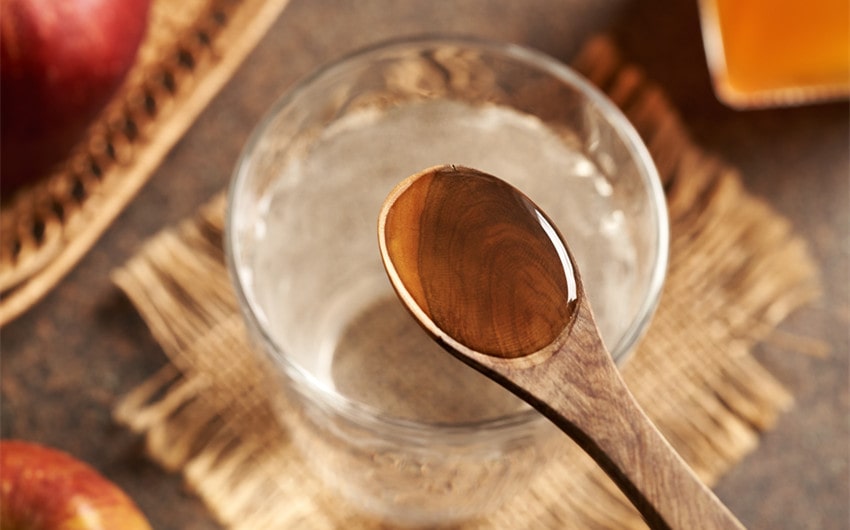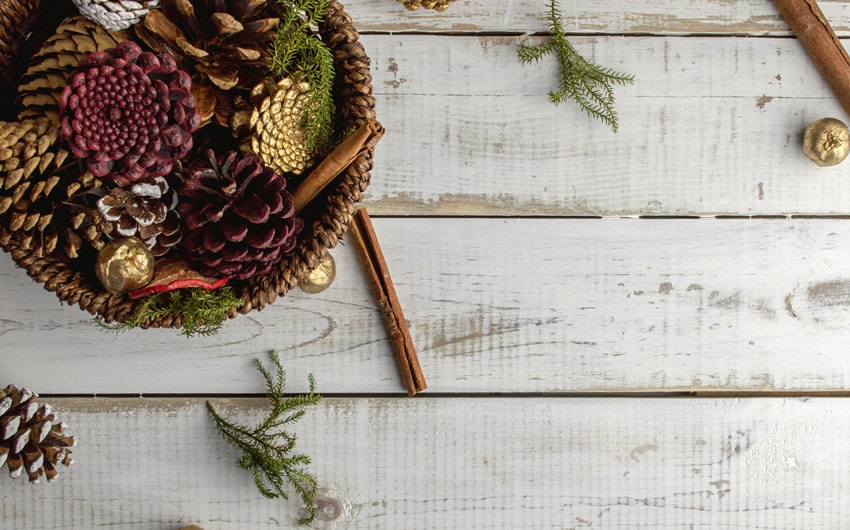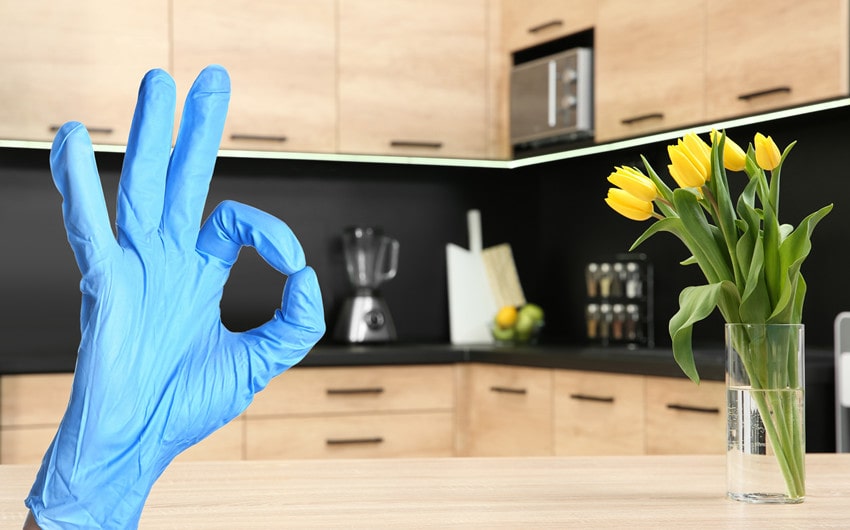8 Easy Tips on How to Make Your House Smell Good
Walking into a home that smells inviting can instantly lift your spirits and create a welcoming atmosphere for guests. You might wonder how to make your house smell good without resorting to harsh chemicals or artificial fragrances. Fortunately, there are plenty of simple, natural methods you can use to fill your space with delightful scents.
From eliminating pesky odors to incorporating fresh elements, transforming your home into a fragrant haven is easier than you think. Let’s explore some effective tips and tricks that will make your house smell amazing in no time!
1. Identify the Source of Unpleasant Odors

One of the first steps in making your home smell good is to identify and address any unpleasant odors lurking around. Let’s break down how to pinpoint these offenders effectively.
Common Culprits
- Pets: If you have furry friends, their bedding, toys, and even their fur can contribute to odors. Regular grooming and cleaning pet areas are essential.
- Trash: Overripe food scraps and takeout containers can create a significant stink. Always empty the trash regularly and clean the bins with a disinfectant.
- Mold and Mildew: Moist areas like bathrooms and basements can develop mold, which not only smells bad but can also pose health risks. This is where investing in quality fixtures and fittings like an upflush toilet can do wonders in keeping these health risks at bay. Keep an eye out for dark spots on walls or ceilings.
- Food and Cooking: Certain foods can leave lingering smells. Fish, cabbage, and strong spices are notorious for this. Ventilating while cooking can help, but if the smell persists, you might need to look into deep cleaning your kitchen.
- Dirty Laundry: Leftover laundry, especially if it’s damp, can smell musty. Make sure to wash clothes promptly and allow them to dry thoroughly.
Tips for Locating Hidden Odors
- Sniff Test: Walk around your home and take note of areas where you notice unpleasant smells. Pay special attention to corners, under furniture, and behind appliances.
- Check the Appliances: Look in places like the refrigerator and dishwasher. Spoiled food and residue can contribute to bad odors.
- Use a Blacklight: For pet owners, a blacklight can help reveal urine stains on carpets and upholstery that are often the source of odors.
- Ventilation Check: Ensure that your home has proper ventilation. Sometimes stale air can create a musty smell, making it harder to pinpoint specific sources.
2. Clean Regularly

Keeping your home clean is one of the most effective ways to ensure it smells fresh and inviting. A consistent cleaning routine helps eliminate odors before they become a problem. Here’s how to approach regular cleaning effectively.
a. Surface Cleaning
- Daily Wipe-Downs: Make it a habit to wipe down surfaces daily. Use scented all-purpose cleaners on countertops, tables, and bathroom sinks to not only remove dirt but also leave a pleasant fragrance behind.
- Focus on High-Traffic Areas: Pay special attention to areas that see a lot of use, such as the kitchen and living room. Dust and food particles can accumulate quickly, leading to bad odors.
- Regularly Clean Appliances: Don’t forget to clean your appliances! Wipe down the exterior of your fridge, microwave, and oven. Inside the fridge, check for expired items that could be causing smells and clean spills immediately.
b. Deep Cleaning
- Carpets and Rugs: Carpets can trap odors, so aim to vacuum them at least once a week. Consider using a carpet cleaner or hiring professionals for deep cleaning every few months to remove ingrained dirt and odors.
- Upholstery: Just like carpets, upholstery can hold onto smells. Vacuum sofas and chairs regularly, and spot clean any stains. For a deeper clean, use upholstery cleaners or steam-cleaning services.
- Curtains and Blinds: Don’t overlook soft furnishings like curtains and blinds, which can also absorb odors. Wash curtains according to the care instructions and dust blinds to keep them fresh.
- Bathrooms: Regularly scrub sinks, tubs, and toilets to prevent soap scum and mildew from building up. Use a toilet cleaner and disinfectant wipes for a quick and effective clean.
- Flooring: Depending on your flooring type, mop hard floors regularly to remove dirt and spills. Use a cleaner that leaves a fresh scent to enhance the overall smell of the space.
3. Use Natural Deodorizers

Natural deodorizers are an excellent way to keep your home smelling fresh without relying on artificial fragrances or chemicals. They are often safer for both your family and the environment. Here’s how to effectively use two popular natural options: baking soda and vinegar.
a. Baking Soda
- Odor Absorption: Baking soda is renowned for its ability to absorb odors. Place an open box or bowl of baking soda in areas like the refrigerator, pantry, or laundry room to neutralize unwanted smells.
- Carpet Freshener: Sprinkle baking soda generously on carpets and rugs. Let it sit for at least 15 minutes (or longer for stronger odors) before vacuuming. This helps lift odors from deep within the fibers.
- Deodorize Shoes: Stinky shoes? Place a small pouch of baking soda inside each shoe overnight. It will absorb moisture and odors, leaving your shoes smelling fresh by morning.
- Fridge Freshener: Keep an open box of baking soda in your fridge to combat food odors. Replace it every three months for the best results.
b. Vinegar
- Neutralizing Odors: Vinegar is a powerful natural deodorizer that can neutralize strong smells. Mix equal parts of water and white vinegar in a spray bottle and use it on surfaces or in rooms that need a freshening up.
- Cleaning Agent: Use vinegar as a cleaning agent for various surfaces, from kitchen counters to bathroom tiles. It effectively cuts through grime and eliminates odors at the same time.
- Laundry Booster: Add a cup of white vinegar to your laundry to help neutralize odors in clothes. It’s especially effective for towels and workout gear that can develop musty smells.
- Eliminate Pet Odors: If you have pets, you can use vinegar to clean areas where they spend time. Spray it on furniture or carpets to neutralize lingering pet odors. Just be sure to test a small area first to ensure no discoloration occurs.
4. Essential Oils and Diffusers

Essential oils are concentrated plant extracts known for their delightful scents and various therapeutic properties. Using them in your home can create a calming atmosphere while eliminating unwanted odors. Here’s how to effectively incorporate essential oils and diffusers into your space.
a. Popular Essential Oils
- Lavender: Renowned for its calming properties, lavender can help create a relaxing environment. It’s perfect for bedrooms and bathrooms. Just a few drops in your diffuser can instantly uplift the mood.
- Lemon: This bright and refreshing scent is ideal for kitchens and living areas. Lemon oil has natural antibacterial properties, making it an excellent choice for cleaning and freshening spaces.
- Eucalyptus: Known for its invigorating scent, eucalyptus oil is great for creating an energizing atmosphere. It’s particularly effective in bathrooms, helping to clear out musty odors.
- Peppermint: If you’re looking for a refreshing burst of energy, peppermint oil is the way to go. It’s perfect for workspaces or playrooms and can even help improve focus.
- Tea Tree: With its strong antiseptic qualities, tea tree oil is great for fighting odors in areas prone to mold or mildew, like bathrooms or basements.
b. How to Use a Diffuser
- Choosing a Diffuser: There are various types of diffusers available, including ultrasonic, nebulizing, and heat diffusers. Ultrasonic diffusers are popular as they disperse essential oils into the air with water vapor, providing added humidity.
- How to Fill: Most diffusers require a combination of water and essential oils. Follow the manufacturer’s instructions for the correct ratio—typically, about 3-10 drops of essential oil per 100 ml of water works well.
- Placement Tips: Place your diffuser in central areas like the living room or open spaces for the best scent distribution. Ensure it’s not too close to walls or furniture, as this can impede airflow.
- Timing: Consider running your diffuser for a couple of hours at a time. Many diffusers come with timers or automatic shut-off features, allowing you to set it and forget it.
- Experiment with Blends: Don’t hesitate to mix different essential oils for a unique fragrance. Popular blends include lavender and lemon for a fresh and calming scent, or eucalyptus and peppermint for a revitalizing atmosphere.
Using essential oils and diffusers is a fantastic way to create a pleasant aroma in your home while also benefiting from their therapeutic properties. With just a few drops, you can transform the mood of your space and keep it smelling wonderful.
5. Scented Candles and Incense

Scented candles and incense are popular choices for creating a warm, inviting atmosphere in your home. They can not only mask odors but also enhance your mood and overall ambiance. Here’s how to choose and use these aromatic products effectively.
a. Choosing Quality Products
- Look for Natural Ingredients: When selecting scented candles, opt for those made from natural waxes, such as soy, beeswax, or coconut. These burn cleaner than paraffin candles, producing less soot and harmful chemicals.
- Check the Fragrance: Seek candles that use essential oils or natural fragrance oils rather than synthetic fragrances. Natural scents are generally more pleasant and less overpowering.
- Consider Wick Material: Choose candles with cotton or wood wicks, as these burn cleaner and produce less soot compared to those with metal or synthetic wicks.
- Size and Burn Time: Consider the size of the candle and how long you want it to last. Larger candles typically provide a stronger scent and longer burn time, making them a good investment for frequent use.
b. Safe Burning Practices
- Placement: Always place candles on stable, heat-resistant surfaces away from flammable materials. Avoid using them near drafts or vents, as this can cause uneven burning and soot production.
- Trim the Wick: Keep the wick trimmed to about 1/4 inch before each burn. This helps prevent excessive soot and ensures a cleaner burn.
- Don’t Leave Unattended: Never leave a burning candle unattended. Extinguish it before leaving the room or going to sleep to prevent fire hazards.
- Ventilation: Ensure the room is well-ventilated when burning candles or incense. This helps disperse the scent evenly and prevents the buildup of smoke or residue.
c. Using Incense
- Types of Incense: Incense comes in various forms, including sticks, cones, and resin. Each type has its own unique burning characteristics and scent profiles.
- Burning Techniques: For sticks and cones, light the tip until it glows, then blow out the flame. Place them in an incense holder to catch ash. For resin, use a charcoal disc in a heatproof container and sprinkle resin on top.
- Room-Specific Scents: Choose different scents based on the room and desired atmosphere. For relaxation, consider sandalwood or jasmine in the bedroom. For a fresh, uplifting vibe, citrus scents like orange or lemongrass work well in common areas.
- Storing Incense: Keep incense in a cool, dry place away from direct sunlight to maintain its potency. Airtight containers can help preserve their fragrance longer.
By incorporating scented candles and incense into your home, you can create a personalized scent experience that enhances your space. These aromatic elements can set the mood for relaxation, focus, or celebration, making your home a more enjoyable place to be.
6. Fresh Flowers and Plants

Incorporating fresh flowers and plants into your home not only adds beauty but also contributes delightful natural fragrances. Here’s how to choose, care for, and maximize the scent potential of your indoor greenery.
a. Best Indoor Plants for Scent
- Jasmine: Known for its sweet and intoxicating fragrance, jasmine is perfect for bedrooms or living spaces. It blooms at night, making it ideal for creating a soothing nighttime atmosphere.
- Gardenias: These stunning white flowers are not only beautiful but also emit a rich, sweet scent. They thrive in bright, indirect sunlight and can enhance the fragrance of any room.
- Lavender: Beyond its use in essential oils, fresh lavender plants provide a calming scent. Place them in sunny spots like kitchens or bathrooms for a refreshing aroma.
- Rosemary: This aromatic herb offers a woody fragrance that’s perfect for kitchens. Plus, it can be used in cooking, making it a practical choice as well.
- Mint: With its invigorating scent, mint is great for adding freshness to any space. It grows well indoors and can be snipped for use in drinks or dishes.
b. Care Tips for Longevity
- Watering: Ensure that your plants are well-watered but avoid overwatering, as this can lead to root rot. Check the top inch of soil; if it’s dry, it’s time to water.
- Light Requirements: Each plant has specific light needs. Most flowering plants prefer bright, indirect sunlight. Be sure to place them where they can thrive without being scorched by direct sunlight.
- Pruning: Regularly prune your plants to remove dead leaves and spent flowers. This not only keeps them looking tidy but also encourages new growth and helps enhance their scent.
- Humidity: Some plants, like jasmine and gardenias, thrive in humid conditions. Consider using a humidity tray or a small humidifier in the room to keep them happy.
- Fertilization: Use a balanced fertilizer during the growing season (spring and summer) to provide essential nutrients. This will help your plants flourish and produce more blooms.
7. Air Out Your Home

Proper ventilation is crucial for maintaining a fresh-smelling home. Airing out your space helps eliminate stale odors, reduce humidity, and improve overall air quality. Here’s how to effectively air out your home and keep it smelling pleasant.
a. Importance of Fresh Air
- Eliminates Stale Odors: Over time, homes can accumulate odors from cooking, pets, and general living. Opening windows allows fresh air to flow in, pushing out stale air and odors.
- Reduces Humidity: Proper ventilation helps reduce moisture levels in your home, which can prevent mold and mildew growth—common sources of unpleasant smells. Fresh air circulation helps maintain a balanced humidity level.
- Improves Air Quality: Fresh air can dilute indoor pollutants and allergens, creating a healthier living environment. This is especially important for families with children, pets, or individuals with respiratory issues.
b. Time of Day to Open Windows
- Morning Freshness: Opening windows in the morning can invite cool, fresh air into your home. This is particularly effective during spring and summer when outdoor air is usually at its best.
- Evening Breezes: In hotter months, consider opening windows in the evening when temperatures drop. This can help cool your home and circulate fresher air.
- Weather Considerations: Be mindful of outdoor conditions. On days with high pollen counts, humidity, or poor air quality, it may be best to keep windows closed. Use an air purifier instead.
- Duration: Aim to air out your home for at least 15-30 minutes each day. If you can, open multiple windows across the house to create a cross-breeze that enhances airflow.
c. Using Fans and Ventilation
- Ceiling Fans: Utilize ceiling fans to promote air circulation. In warmer months, set fans to rotate counterclockwise to create a cooling breeze. In colder months, reverse the direction to help distribute warm air.
- Exhaust Fans: Turn on kitchen and bathroom exhaust fans while cooking or showering to expel moisture and odors. This helps keep your home smelling fresh and prevents mildew growth.
- Portable Fans: If your home lacks good ventilation, consider using portable fans to help push stale air out and bring fresh air in. Position fans near windows to create airflow.
d. Seasonal Ventilation Tips
- Spring Cleaning: Take advantage of spring weather to do a thorough airing out. Open windows wide during your spring cleaning to help remove dust and stale air.
- Summer Heat: In summer, consider keeping windows closed during the hottest part of the day to keep your home cool. Open them in the early morning or late evening instead.
- Fall Maintenance: As leaves fall and mold spores become more prevalent, regular ventilation becomes even more important. Ensure your windows and screens are clean to allow fresh air in.
- Winter Warmth: In winter, open windows for brief periods on milder days to let fresh air circulate. It’s essential to balance warmth with ventilation to prevent stuffiness.
By regularly airing out your home, you can significantly improve its overall scent and atmosphere. Fresh air not only keeps your living space inviting but also contributes to better health and well-being for you and your family.
8. Create Your Own Potpourri

Making your own potpourri is a delightful and creative way to bring custom scents into your home. Not only can you personalize the fragrances to your liking, but it’s also a great way to use up leftover botanicals. Here’s how to create your own potpourri.
a. Choosing Ingredients
- Dried Flowers: Start with a base of dried flowers. Popular choices include rose petals, lavender, and chamomile. These flowers provide natural fragrance and add beautiful color.
- Herbs and Spices: Incorporate dried herbs and spices to enhance the scent profile. Consider using cinnamon sticks, cloves, star anise, or dried rosemary. These add warmth and depth to your potpourri.
- Citrus Peels: Dried citrus peels, such as orange or lemon, add a refreshing and uplifting scent. Simply dry the peels in the oven at a low temperature or leave them to air dry.
- Essential Oils: To boost the fragrance, add a few drops of your favorite essential oils. For a calming mix, try lavender or chamomile; for something more invigorating, consider lemon or peppermint.
- Fixatives: Use natural fixatives to help retain the scent longer. Examples include orris root powder or ground resins like benzoin. These help preserve the fragrance in your potpourri.
b. Preparing Your Potpourri
- Gather Your Materials: Collect your dried flowers, herbs, spices, citrus peels, and any other ingredients you wish to use. A large bowl or mixing container will be needed to combine everything.
- Mix Ingredients: In your bowl, combine the dried flowers, herbs, spices, and citrus peels. Experiment with ratios to find the right balance that suits your personal scent preferences.
- Add Essential Oils: Once your base mix is ready, add a few drops of essential oils. Start with 5-10 drops, and adjust as needed for a stronger scent. Mix thoroughly to ensure the oils are evenly distributed.
- Add Fixatives: If you’re using fixatives, add them now. A tablespoon or two should suffice. This step is optional but recommended for longer-lasting scent.
- Let It Rest: Transfer your mixture to a jar or airtight container and let it sit for a few days to allow the scents to meld. This resting period enhances the overall fragrance.
c. Displaying Your Potpourri
- Jars and Bowls: Use decorative bowls or jars to display your potpourri around the house. Clear glass containers can showcase the beautiful colors, while ceramic bowls add a rustic touch.
- Scent Sachets: For a more portable option, fill small fabric sachets with your potpourri mix. These sachets can be placed in drawers, closets, or even your car for a subtle scent boost.
- Seasonal Changes: Consider changing your potpourri seasonally. For fall, use scents like apple, cinnamon, and clove; for spring, incorporate floral notes like jasmine and peony. This keeps your home smelling fresh and in tune with the season.
d. Refreshing Your Potpourri
- Rejuvenating Scents: After a few weeks, the scent of your potpourri may start to fade. To refresh it, simply add a few more drops of essential oil and mix gently.
- Rotate Ingredients: If you notice certain elements are losing their fragrance faster than others, consider swapping them out. You can add new dried flowers or herbs to revive the scent.







